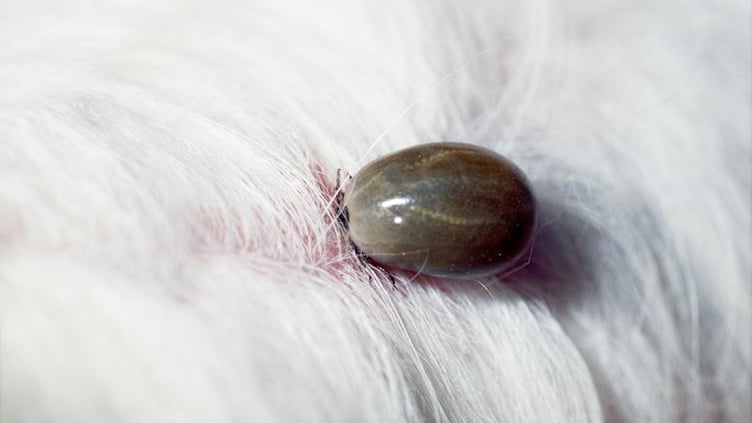In this week’s column, ManxSPCA General Manager Juana Warburton talks about the tiny bites that can cause big trouble and how to remove ticks from your pets...
There’s nothing like a bit of A-list celebrity endorsement to generate great PR, but maybe Justin Timberlake (the 44 year-old American musician who has been topping the pop charts for the last two decades) would prefer not to be the current ‘poster boy’ for Lyme disease following his diagnosis in July.
Lyme disease is a stubborn bacterial infection transmitted by ticks, and Timberlake’s symptoms are commonly associated with the condition – namely debilitating fatigue, muscle pain, rashes and impaired brain function. Lyme disease can cause very serious illness - it can even be fatal - and in 2017 former England rugby captain, Matt Dawson, had to undergo heart surgery after a tick bite.
Up to 5,000 people in the UK are thought to be affected by the disease every year, and apparently 2025 is proving to be a particularly ‘good’ year for tick numbers, but is Lyme disease becoming more prevalent? Researchers say it’s hard to give a definitive answer because several factors are at play: people are becoming increasingly aware of the disease and it’s more likely to be diagnosed (a trend likely to continue thanks to Mr. Timberlake); but environmental factors could also be at play. Climate change, agricultural practices and habitat loss could be impacting on the tick population and its wider distribution.
About ten per cent of ticks in the UK carry Lyme disease. These tiny spider-like insects attach themselves to long grass or dense vegetation and, given they don’t fly or jump, they wait until they can climb on to a passing host. They will then bite the host and gorge on its blood, becoming bigger and bigger in the process…before falling off. Most hosts are sheep, wild mammals and birds, but humans and domestic animals (dogs in particular) are just as vulnerable. Dogs can develop Lyme disease in the same way as humans (cats seem to be more immune), but their fur makes it harder to detect early symptoms such as an oval-shaped, ‘bull’s eye’ rash which spreads around the bite. Bites are usually painless and may not become visible straight away, and later symptoms include lethargy and joint stiffness.
If you or your dog have been walking in long grass or dense vegetation you should check for tiny black dots (‘empty’ ticks) embedded in the skin as soon as you get home. Adults are most commonly bitten on their legs, whereas children’s head and neck areas are more vulnerable. And a dog’s head, underbelly and legs are key target areas for ticks.
To safely remove a tick the NHS advises:
- Use fine-tipped tweezers or a tick removal took (available from pet shops)
- Grasp the tick as close to the skin as possible
- Slowly pull upwards, taking care not to squeeze the tick (which may push blood back into the skin)
- Flush the tick down the toilet
- Clean the bite with antiseptic or soap and water
Of course, prevention is better than cure, and if you’re walking in long grass you should consider covering your skin by wearing trousers and long sleeved clothing, ideally in a light colour so that you can easily spot any ticks that may have landed on you. You should also use insect repellant that contains DEET, and ensure your pet is up-to-date with its flea and tick treatments (in tablet form or as sprays and topical ‘spot-ons’). This is the time of year, when ticks are most prevalent, when they should be applied regularly but over-use of these chemicals can harm the environment.
The good news is that an infected pet cannot transmit Lyme disease directly to a human, and if the disease is caught early enough it can be treated effectively with antibiotics.

.jpg?width=209&height=140&crop=209:145,smart&quality=75)

.png?width=209&height=140&crop=209:145,smart&quality=75)
